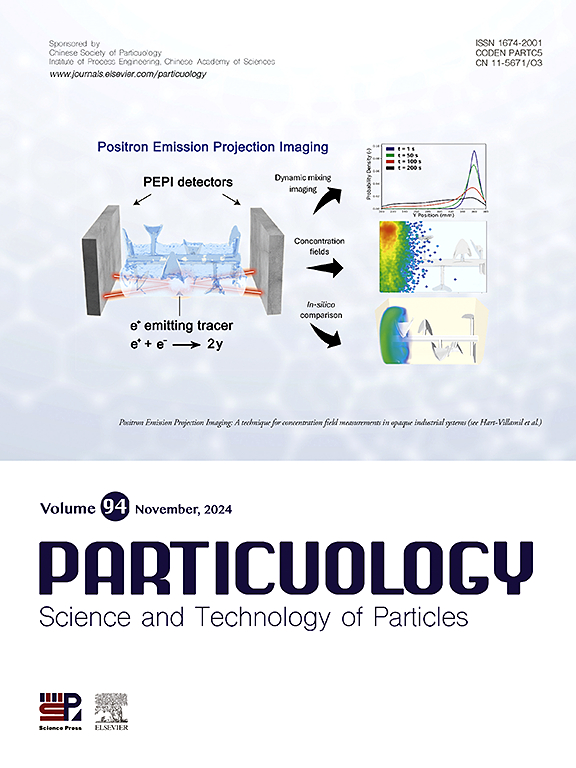Thermal safety overview of silicon-carbon anode in lithium-ion batteries: Key parameters in determining the reactivity
IF 4.1
2区 材料科学
Q2 ENGINEERING, CHEMICAL
引用次数: 0
Abstract
The quest for high-energy-density lithium-ion batteries has led to the widespread adoption of silicon anodes, yet their safety, particularly regarding thermal runaway, remains a critical concern. Herein, the thermal safety overview of silicon-carbon anode is conducted to identify the determinants of materials reactivity and heat generation sources. In the hierarchical silicon-carbon anode, surface floating silicon without carbon protection is a serious hazard affecting the thermal safety, exhibiting a 77 % increase in heat release at 100 % state of charge. When the pouch cells with floating silicon are conducted in the test of accelerating rate calorimeter, the maximum temperature can be 875.2 °C (532.1 °C for samples without floating silicon). In addition, the thermal safety of graphite anodes blending with different ratios of silicon-carbon electrode are also explored, confirming the potential safety risks of high-silicon-content lithium-ion batteries. This work presents comprehensive understandings on the thermal features of the high-capacity silicon-carbon anode, which is pivotal for enhancing the safety of next-generation silicon-based high-energy-density batteries.

锂离子电池硅碳阳极的热安全性综述:决定反应性的关键参数
对高能量密度锂离子电池的追求导致了硅阳极的广泛采用,但它们的安全性,特别是热失控,仍然是一个关键问题。本文对硅碳阳极的热安全性进行了概述,以确定材料反应性和发热源的决定因素。在分层硅碳阳极中,没有碳保护的表面浮动硅是影响热安全的严重危险,在100%充电状态下,放热增加77%。在加速速率量热计测试中,含浮硅的袋状电池的最高温度可达875.2℃(无浮硅样品的最高温度为532.1℃)。此外,还探讨了石墨阳极与不同比例硅碳电极共混的热安全性,确认了高硅含量锂离子电池的安全隐患。这项工作提供了对高容量硅碳阳极热特性的全面理解,这对于提高下一代硅基高能量密度电池的安全性至关重要。
本文章由计算机程序翻译,如有差异,请以英文原文为准。
求助全文
约1分钟内获得全文
求助全文
来源期刊

Particuology
工程技术-材料科学:综合
CiteScore
6.70
自引率
2.90%
发文量
1730
审稿时长
32 days
期刊介绍:
The word ‘particuology’ was coined to parallel the discipline for the science and technology of particles.
Particuology is an interdisciplinary journal that publishes frontier research articles and critical reviews on the discovery, formulation and engineering of particulate materials, processes and systems. It especially welcomes contributions utilising advanced theoretical, modelling and measurement methods to enable the discovery and creation of new particulate materials, and the manufacturing of functional particulate-based products, such as sensors.
Papers are handled by Thematic Editors who oversee contributions from specific subject fields. These fields are classified into: Particle Synthesis and Modification; Particle Characterization and Measurement; Granular Systems and Bulk Solids Technology; Fluidization and Particle-Fluid Systems; Aerosols; and Applications of Particle Technology.
Key topics concerning the creation and processing of particulates include:
-Modelling and simulation of particle formation, collective behaviour of particles and systems for particle production over a broad spectrum of length scales
-Mining of experimental data for particle synthesis and surface properties to facilitate the creation of new materials and processes
-Particle design and preparation including controlled response and sensing functionalities in formation, delivery systems and biological systems, etc.
-Experimental and computational methods for visualization and analysis of particulate system.
These topics are broadly relevant to the production of materials, pharmaceuticals and food, and to the conversion of energy resources to fuels and protection of the environment.
 求助内容:
求助内容: 应助结果提醒方式:
应助结果提醒方式:


